Ascension’s history is one of remarkable transformations.

From an austere beginning as a bastion of the evangelical movement it has become a church of extraordinary beauty with exceptional music and liturgy. From a church with rented pews and a mostly affluent, homogeneous congregation, it has evolved into a parish of diverse people whose economic circumstances vary widely.
Being “in the world, but not of the world” has given this parish a ringside seat to many events. This timeline, albeit selective, places our history within and alongside that of our city, the nation and the world.
See also
 The Rev. Manton Eastburn, an English immigrant and recent graduate of General Theological Seminary, begins work as an assistant at St. Michael's Church, Bloomingdale (now the Upper West Side). He is 22 years old.
The Rev. Manton Eastburn, an English immigrant and recent graduate of General Theological Seminary, begins work as an assistant at St. Michael's Church, Bloomingdale (now the Upper West Side). He is 22 years old.
Eastburn “returns south to New York City," to serve as assistant to The Rev. Dr. Thomas Lyell, rector of Christ Church, Anthony and Worth Streets.

In the spring, a group of evangelical Christians ask Eastburn to “found a [parish] with us, within an historic church, to proclaim this living, personal, evangelical faith, and we will follow you.” They begin meeting in the first French Huguenot parish (1687) in New York, L'Eglise Français du Saint-Esprit, on King (now Pine) Street. The French parish had joined the Protestant Episcopal Church 20 years earlier.
Slavery is officially abolished in the state of New York on July 4; the African-American community celebrate final emancipation in the state with a parade through New York City on July 5.
However, part-time residents and temporary visitors are still allowed to own slaves. Full abolition in New York will not come about until 1841, during which time many New Yorkers still profited from the slave trade in other states and in the cotton market.
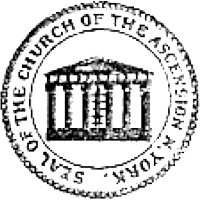 The Church of the Ascension is incorporated as a Protestant Episcopal parish of the Diocese of New York on October 1.
The Church of the Ascension is incorporated as a Protestant Episcopal parish of the Diocese of New York on October 1.
 On April 15, Bishop John Henry Hobart lays the cornerstone for the new church in a lot on the north side of Canal Street, just east of Broadway.
On April 15, Bishop John Henry Hobart lays the cornerstone for the new church in a lot on the north side of Canal Street, just east of Broadway.

Bishop Hobart consecrates the completed church building on May 23.
March 16 is recorded as the dullest day in New York Stock Exchange history, with a total volume of 31 shares trading hands.
The Diocese of New York at the end of Bishop Hobart's tenure as diocesan comprises 165 congregations and 6,700 communicants — up from 40 and 2,300, respectively, 19 years earlier.
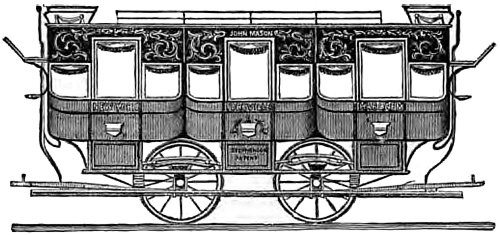
The establishment of the Domestic and Foreign Missionary Society (DFMS) by the 1821 General Convention of the Episcopal Church initially combined the voluntary and centralized modes of missionary support, but it remained dependent on voluntary dues from its members. In order to ensure mission work was the responsibility of all Episcopalians, the 1835 General Convention took the major step of amending the DFMS constitution to read, “The Society shall be considered as comprehending all persons who are members of this Church.” To this day, the "Domestic and Foreign Missionary Society of the Protestant Episcopal Church" remains the legal name of the Episcopal Church.
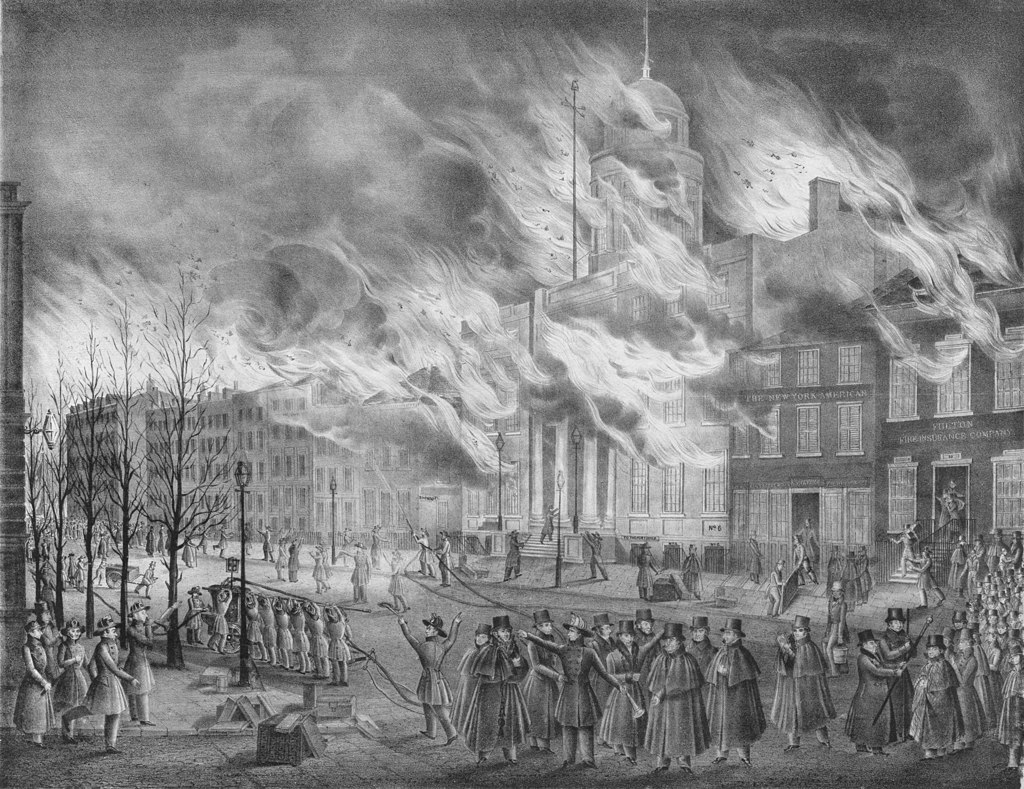
On December 16, a fire that began at Pearl and Merchant (Hanover) Streets lasts two days, ravaging 17 blocks, and destroying the Stock Exchange, Merchants' Exchange, the Post Office and the South Dutch Church. The glow from the fire was visible from Philadelphia, 80 miles away.
Chicago, 10 square miles and 3,297 people, is incorporated as a city far to the west of New York City.
A fire starts in the lumber of a carpenter's shop at the rear of the Church of the Ascension and smoke and flames appear during a 4 pm Sunday service, just before the sermon. The church and adjoining Sunday School building are destroyed. The Dutch Reformed congregation at East Ninth Street and Astor Place, east of Broadway, makes available the use of its church for the homeless parish.
On September 9, Fidelio, Ludwig van Beethoven's only opera, has its U.S. premiere in New York at the Park Theatre — twelve years after the composer's death.
The Rt. Rev. Dr. Benjamin T. Onderdonk, bishop of New York and successor to Bishop Hobart, lays the cornerstone on March 19 for the new Church of the Ascension to be built at the corner of Fifth Avenue and Tenth Street.
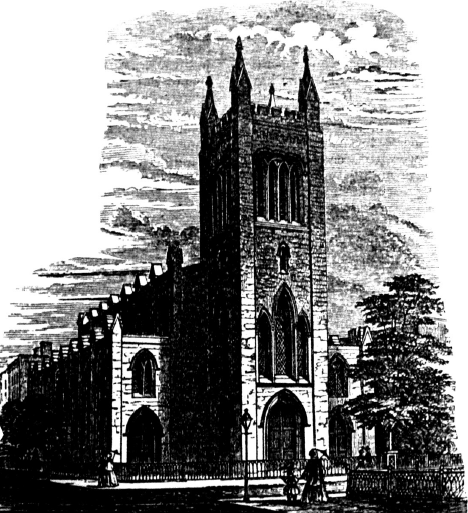 The new Church of the Ascension, designed by Richard Upjohn, is consecrated by Bishop Onderdonk on November 5.
The new Church of the Ascension, designed by Richard Upjohn, is consecrated by Bishop Onderdonk on November 5.
 Letitia Tyler, wife of President John Tyler, dies on September 10 in the White House — the first First Lady to do so — following a stroke.
Letitia Tyler, wife of President John Tyler, dies on September 10 in the White House — the first First Lady to do so — following a stroke. A parish-run school for the poor of Greenwich Village is established. Manton Eastburn resigns as rector to become rector of Trinity Church, Boston, and Assistant Bishop of Massachusetts.
A parish-run school for the poor of Greenwich Village is established. Manton Eastburn resigns as rector to become rector of Trinity Church, Boston, and Assistant Bishop of Massachusetts.
 Gregory Thurston Bedell is installed as rector.
Gregory Thurston Bedell is installed as rector.
Ascension's new schoolhouse is erected at 12 West Eleventh Street. The parish's first appropriation for music covers the cost of an organist, a choir (4 voices) and a "bellows boy" for the organ: $1225.
A gun on the USS Princeton explodes while firing during a pleasure trip along the Potomac on February 28. Among those killed are the Secretary of State, the Secretary of the Navy, and David Gardiner, of Gardiners Island. President Tyler narrowly escapes death himself, leaving him shaken yet able to console the bereaved daughters of Mr. Gardiner.

 President Tyler, a widower, marries Julia Gardiner, daughter of David Gardiner, at the Church of the Ascension on June 26. He will be remembered by history for being the first U.S. president to marry while in office...and not for much else.
President Tyler, a widower, marries Julia Gardiner, daughter of David Gardiner, at the Church of the Ascension on June 26. He will be remembered by history for being the first U.S. president to marry while in office...and not for much else.In October, the Rev. Gregory T. Bedell marries Julia Strong at the church he leads as rector. Mrs. Bedell later leads the establishment of a day school in New York's most notorious neighborhood for squalor, poverty and crime: Five Points. Today the neighborhood is occupied by Foley Square courthouses and Chinatown businesses.
William Augustus Muhlenberg founds the Church of the Holy Communion in New York on what is now Sixth Avenue at Twentieth Street. The parish is a bold innovation, with free pews, a parish unemployment fund, and use of flowers and candles at the altar. (Of the notorious nightclub that would occupy the deconsecrated building a century and a half later, Bishop Paul Moore would say: "This is public depravity I have never thought possible, even in New York.")
 The first convention on women's rights convenes in Seneca Falls, organized by Elizabeth Cady Stanton, Lucretia Coffin Mott, and Martha Coffin Wright. One hundred of the convention's 300 attendees sign the "Declaration of Sentiments," modeled after the American colonies' Declaration of Independence.
The first convention on women's rights convenes in Seneca Falls, organized by Elizabeth Cady Stanton, Lucretia Coffin Mott, and Martha Coffin Wright. One hundred of the convention's 300 attendees sign the "Declaration of Sentiments," modeled after the American colonies' Declaration of Independence.
 A mob numbering nearly 20,000 invades the Astor Place Opera House on May 10, rioting against English actor William Macready's portrayal of Macbeth; 22 are killed and 9 others will later die of their injuries.
A mob numbering nearly 20,000 invades the Astor Place Opera House on May 10, rioting against English actor William Macready's portrayal of Macbeth; 22 are killed and 9 others will later die of their injuries.
Also this year: a new musical instrument by Adolphe Sax debuts in the U.S. to New York audiences.
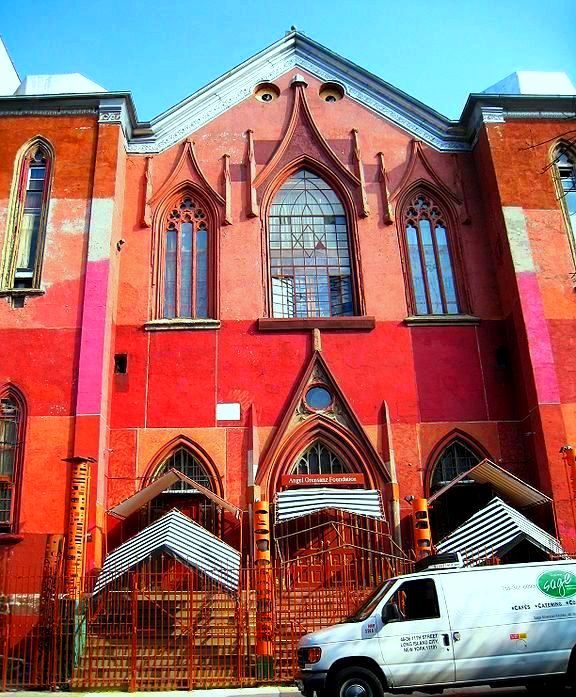
The first synagogue in New York built as such (Jewish congregations up to now have worshiped in converted church buildings) is constructed on the Lower East Side at 172-176 Norfolk Street, between Stanton and East Houston streets. It is the largest synagogue in the United States at the time, and is the fourth-oldest surviving synagogue in the country today.

William Aspinwall, among the pioneering Ascension parishioners since the early Canal Street days, and his brother John Aspinwall were New York railroad and shipping magnates who, during their lifetimes, were among the most generous benefactors to institutions of the Episcopal Church. In 1858, they donate Aspinwall Hall to Virginia Theological Seminary in Alexandria, Virginia. (They also paid for buildings at Seabury-Western Theological Seminary in Chicago and Nashotah House Theological Seminary in Wisconsin.)
Until the 1940s, Aspinwall Hall held classrooms on the first floor and, upstairs, served as a dorm for the (then) exclusively male, exclusively white student body; the seminary admitted its first black seminarians in the 1950s, its first women students in the 1960s. Today it houses administrative offices. In 2019, VTS announced it had set up a fund of $1.7 million dollars toward making reparations, acknowledging that some of the labor involved in constructing parts of the campus, including Aspinwall Hall, was slave labor owned by a construction contractor.

From 1843 to 1859, Ascension parishioners donate $225,000 for purposes outside the parish, at a time when the regular budget in any given year was not more than $10,000, the bulk of which came from pew rents.
In 1859, the Church of the Ascension donates Ascension Hall to Kenyon College. Originally a dormitory, of English architecture with pinnacles and a turreted tower, it remains one of the more beautiful and popular buildings on the campus. Today it houses the departments of modern languages and literature, economics, classics, philosophy and (appropriately) religious studies.
 Gregory Bedell (who had received an honorary doctorate from Norwich University, Vermont, in 1856) resigns as rector upon being elected Bishop Coadjutor of the Diocese of Ohio. (Proving the maxim that no good deed goes unpunished, he had initially come to the attention of the diocese through the parish's gift of Ascension Hall to Kenyon College.) During his rectorship and into the 1860s, the Church of the Ascension became known as the "Low Church Cathedral," with a broad evangelical expression from the pulpit alongside an unusual fondness for good music and a dignified service.
Gregory Bedell (who had received an honorary doctorate from Norwich University, Vermont, in 1856) resigns as rector upon being elected Bishop Coadjutor of the Diocese of Ohio. (Proving the maxim that no good deed goes unpunished, he had initially come to the attention of the diocese through the parish's gift of Ascension Hall to Kenyon College.) During his rectorship and into the 1860s, the Church of the Ascension became known as the "Low Church Cathedral," with a broad evangelical expression from the pulpit alongside an unusual fondness for good music and a dignified service.
 The Rev. Dr. John Cotton Smith — descendent of John Cotton Smith, a governor of Connecticut, the Rev. Dr. Increase Mather, sixth president of Harvard University, and the Rev. Cotton Mather, one of the most influential figures in colonial America — is installed as rector on December 29, 1859.
The Rev. Dr. John Cotton Smith — descendent of John Cotton Smith, a governor of Connecticut, the Rev. Dr. Increase Mather, sixth president of Harvard University, and the Rev. Cotton Mather, one of the most influential figures in colonial America — is installed as rector on December 29, 1859.
South Carolina secedes from the Union.

The Church of the Ascension establishes a mission church, the Chapel of the Comforter, in a rented house at Greenwich and Bethune streets (later moved to the corner of Greenwich and Jane, and finally to Horatio Street in 1895). The above photograph is of the combined choirs, circa 1925.
Abraham Lincoln inaugurated as 16th president. Other southern states secede from the Union.
In a pastoral letter, the northern House of Bishops refuses to recognize the separation of the Southern dioceses. Throughout the Civil War, they are simply recorded as “absent” at General Convention.
Fire damages the interior of the church. While not serious, a notice appeared in a local paper: “On account of injury to the Church of the Ascension THIS MORNING by fire, there will be no service in the church tomorrow, May 30.”
The Civil War ends.
The president of the United States, a crypto-Presbyterian, is assassinated by an Episcopalian on Good Friday.
An independent association of Ascension parishioners establishes “mission houses” — model tenements — as affordable housing for the poor, at Forty-Third Street and Ninth Avenue.
Following Manhattan's population tide northward, the parish establishes an “Upper Church of the Ascension” in a rented hall at Sixth Avenue and Thirty-Fourth Street. The chapel closes two years later as members prefer to continue coming down to the “Lower” church instead.

Kenyon College, Ohio, builds its Church of the Holy Spirit, financed largely by members of the Church of the Ascension, at the urging of Bishop Bedell of Ohio, former rector of the parish. The chapel was named in honor of the French Huguenot parish that first sheltered Ascension; one window memorializes the parish's first sexton. (The father of the parish's third rector was president of Kenyon College. More than a century later, prior to his work in parish ministry, Andrew W. Foster, Ascension's eleventh rector, will serve as the college's chaplain.)

Dr. John Cotton Smith, "with the aid of friends," establishes Ascension Memorial Church in Ipswich, Massachusetts, which is completed and consecrated in 1875. Architect James Renwick (known for Grace Church, St. Patrick's Cathedral, the Smithsonian Institution Building in Washington, D.C., and many other buildings), a parishioner of Ascension in Manhattan, designs the building.
William Reed Huntington publishes The Church Idea in which he articulates the essentials of Christian unity. His principles are incorporated into what we know as the Chicago-Lambeth Quadrilateral, roughly corresponding to the points in Acts 2:41-42. Huntington would later become rector of Grace Church in New York.

Another Ascension Memorial Church is founded on West 43rd by the parish to serve the neighborhood of the "mission houses." It becomes an independent parish in 1876 and serves the community until 1895.
The Women's Auxiliary, the first nationwide women's organization in the Episcopal Church, is founded. Now called Episcopal Church Women, the Auxiliary began the United Thank Offering, which in 2020 granted more than $1.5 million toward the mission and outreach of the church.
Ascension's rector, Dr. Smith, is too ill to attend the parish's annual meeting and election of vestrymen. He subsequently takes a six-month leave for his health.
The Park Theatre announces that tickets to William Schwenck Gilbert's farcical comedy The Wedding March may be procured by telephone.

A former curate, Dr. E. Winchester Donald, is called after Dr. John Cotton Smith, rector of Ascension, dies in January. Donald is installed as the parish's fourth rector on Palm Sunday.
The parish orders a new organ for $3,600. A new pulpit, designed by Charles F. McKim, is given in honor of the first rector, Manton Eastburn.
Having removed the galleries on the north and south sides of the nave, the parish begins the work of remodeling the chancel, under the direction of architect Stanford White.
Commissioned to paint a mural of "The Ascension," artist (and Ascension neighbor) John La Farge travels to Japan with his close (but extremely bigoted) friend Henry Adams to research landscapes.
The La Farge mural and reredos angels by Louis Saint-Gaudens are unveiled at the Church of the Ascension on December 30.
In place of the former two-story schoolhouse, the parish dedicates a new Parish House at 12 West Eleventh Street. As the church had only fifteen “free” pews available at the time, Sunday evening services are established in the Parish Hall, which is turned into a chapel. A vested boys’ choir sings evensong there, which distresses some parishioners as "very high church.”
James Naismith, a YMCA instructor in Springfield, Massachusetts, devises a game called “basketball.” The game initially used a soccer ball — leaving dribbling for a later invention — and a pair of peach baskets as the hoops.
Dr. Donald resigns as rector, called to succeed the Rev. Phillips ("O, Little Town of Bethlehem") Brooks at Trinity Church, Boston. He would later tell the sexton there, “I wish that a hole would suddenly open up so that I could go back underground to the Church of the Ascension in New York.”
 Dr. Percy Stickney Grant becomes fifth rector of Ascension on October 1, on condition that pew rents be abolished. The name plates are removed after the first of November. Only one — the west-end-of-the-north-aisle family pew of August Belmont Jr., financier of the first New York City subway and builder of Belmont Park racetrack — is left for future generations to see. “Free pews create a free pulpit,” Grant says.
Dr. Percy Stickney Grant becomes fifth rector of Ascension on October 1, on condition that pew rents be abolished. The name plates are removed after the first of November. Only one — the west-end-of-the-north-aisle family pew of August Belmont Jr., financier of the first New York City subway and builder of Belmont Park racetrack — is left for future generations to see. “Free pews create a free pulpit,” Grant says.
Dr. Grant establishes the first chancel choir at Ascension, from November to May. (The rest of the year, a quartet join the organist in the rear balcony.)
The architecture firm of McKim, Mead and White draws plans to accommodate a new chancel organ at Ascension. (Prior to this, the organ console had been in the rear gallery.) A stained-glass window, created by Tiffany and Company in memory of Julia Rhinelander, is dedicated.
Pope Leo XIII issues bull entitled Apostolicae Curae, which declares Anglican ordination to be “absolutely null and utterly void.”
Among the 51 organizations operating within the parish during Dr. Grant’s tenure, the Girls Club meets three times weekly, according to the Ascension Yearbook of 1903. The rector is ex-officio president of this group, for which the Friday night classes include “Dancing and First Aid to the Injured.”

Wilbur and Orville Wright demonstrate the possibilities of mechanical flight near Kittyhawk, North Carolina.
Ascension’s Public Forum, for discussion of current events and “to show that religion included the recognition of economics and the bread-and-butter problem,” is founded. In the course of its existence, it presents such speakers as Margaret Sanger (speaking on birth control), Booker T. Washington (on vocational training for African-Americans), Carrie Chapman Catt (on woman's suffrage), Fiorello LaGuardia (on the city charter), and William Howard Taft, former U.S. president (on the League of Nations).
 A year before his death, Samuel Clemens (Mark Twain) visits Ascension for the last time to attend the wedding of his social and literary secretary Isabel Lyon to his friend and business adviser Ralph Ashcroft on March 19. (Clemens had moved to Connecticut from his Greenwich Village house at Fifth Avenue and Ninth Street, which had orignally been designed by James Renwick, an Ascension parishioner, for his parents.)
A year before his death, Samuel Clemens (Mark Twain) visits Ascension for the last time to attend the wedding of his social and literary secretary Isabel Lyon to his friend and business adviser Ralph Ashcroft on March 19. (Clemens had moved to Connecticut from his Greenwich Village house at Fifth Avenue and Ninth Street, which had orignally been designed by James Renwick, an Ascension parishioner, for his parents.)
Ascension, one of the first New York parishes to do work in prisons, establishes the Social Relief Bureau to help discharged prisoners. The bureau was also largely responsible for clean-up of Blackwell’s Island (today known as Roosevelt Island).
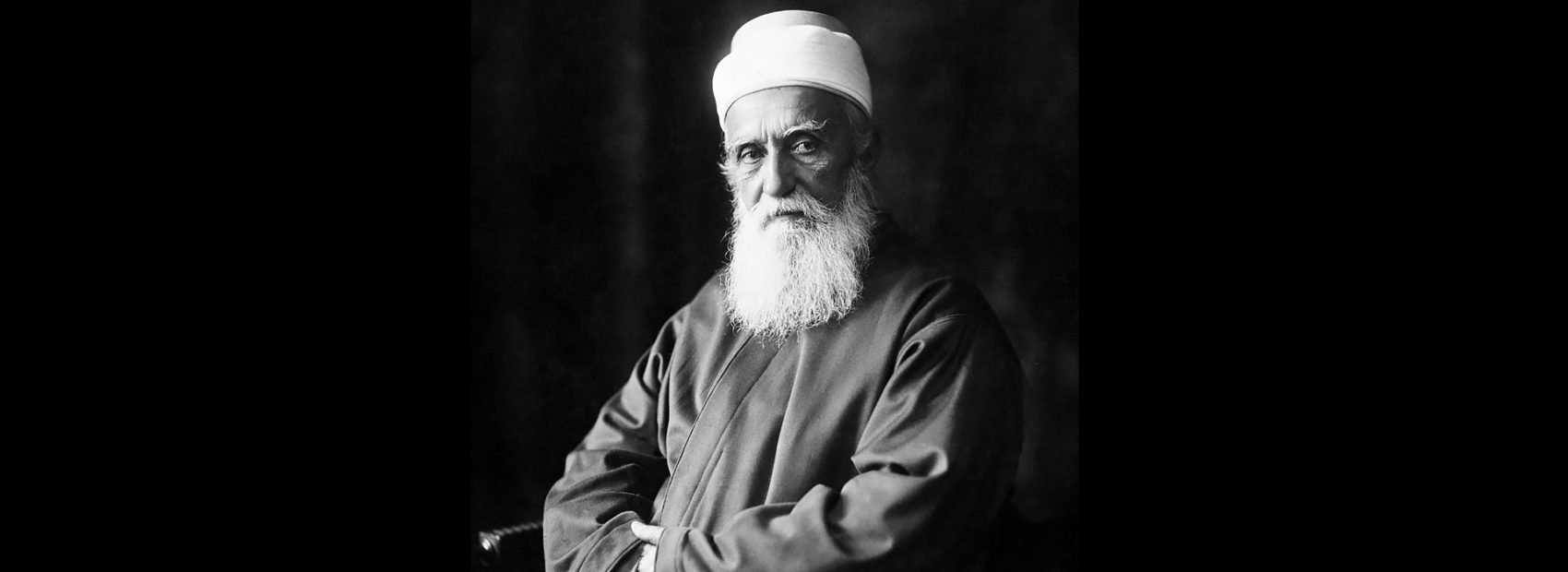
One of the first ecumenical events held at Ascension, the son of the founder of the Baha’i faith, ‘Abdu’l-Bahá, speaks at Ascension. This marks the first official instance of the Baha’i faith being expressed in the U.S.
The rector, Dr. Grant, institutes communion by intinction, stating the common cup to be “a menace to health, if not contrary to the laws of the state.” He even suggests communicating the wine by using individual cups.
(Over a century later, during the CoVID-19 pandemic, the Rt. Rev. Andrew ML Dietsche, bishop of New York, would restrict distribution of communion to "one kind" — meaning the Host, or bread — to mitigate health risks.)
Jessie Craig Adam is hired as the organist and choirmaster, making her one of the few women to hold that role in an American church. Under her, the parish inaugurates a series of "Services of Music" — concerts of choral and classical music — that continues until the formation of Ascension Music, Inc., in 1991.
Ascension’s Religious Forum is established, “to show that religion included the use of science and reason.” Running for 15 weeks, it followed the format of the Public Forum, with an address followed by discussion. Among the speakers was Harry Emerson Fosdick on “A Reasonable Belief in God.”
The United States declares war on Germany on Good Friday, and the House of Bishops responds with a pastoral letter, which speaks of “a nation fighting to keep the world safe for democracy,” in a war “not of armies but of people” — promising that “after war will come peace.”
The World War I armistice is signed on November 11.
The 18th Amendment, the national prohibition of liquor, goes into effect on January 17. Forty-seven states had ratified the amendment (with New Jersey joining their ranks in 1922); only two — Connecticut and Rhode Island — rejected it.
Parishioner (and, from 1927-1932, the church's neighbor across the street) Willa Cather publishes her short story "The Diamond Mine" in her collection Youth and the Bright Medusa. In it, her character Cressida Garnet, being in love, has one plan of action:
"To have the Tenth Street house done over, to put more money into her brothers' business, send Horace to school, raise Poppas' percentage, and then with a clear conscience be married in the Church of the Ascension. She went through this program with her usual thoroughness."
(In the story's original publication in McClure's Magazine in 1916, the wedding had been sited at nearby Grace Church.)
In August, the 19th Amendment, prohibiting the denial of the right to vote based on sex, is ratified by the requisite 36 states and becomes part of the fabric of the Constitution. (The last state to reverse its original rejection of women's right to vote would be Mississippi, which would eventually ratify it in 1984.)
The House of Bishops votes to remove the word "obey" from the marriage ceremony.

 The Rt. Rev. William T. Manning (pictured at left), 10th bishop of New York, engages in a feud with Dr. Grant (pictured at right) even more public than Grant's with Bishop Burch had been. The bishop accuses the rector of heresy. The rector suggests the bishop is superstitious. Manning says Grant is obfuscating; Grant says he is being persecuted for his socialist sympathies. And all of this takes place in open letters published in the press and in sermons from the pulpit. Underlying these tensions, Dr. Grant had become engaged in 1921 to the twice-divorced Rita Hernandez de Alba de Acosta Stokes Lydig, whose previous husbands were still living, and the bishop forbade the marriage.
The Rt. Rev. William T. Manning (pictured at left), 10th bishop of New York, engages in a feud with Dr. Grant (pictured at right) even more public than Grant's with Bishop Burch had been. The bishop accuses the rector of heresy. The rector suggests the bishop is superstitious. Manning says Grant is obfuscating; Grant says he is being persecuted for his socialist sympathies. And all of this takes place in open letters published in the press and in sermons from the pulpit. Underlying these tensions, Dr. Grant had become engaged in 1921 to the twice-divorced Rita Hernandez de Alba de Acosta Stokes Lydig, whose previous husbands were still living, and the bishop forbade the marriage.Citing ill health and literary contract obligations, Dr. Grant resigns as Ascension's rector after 30 years. He and Rita de Acosta Lydig break off their engagement. Grant would die three years later, leaving his personal fortune to her. In her grief, she would spend all of it as well as her own wealth on fashion, art, furniture, and other objects. Becoming heavily in debt in less than a year, she will sell her Washington Square house and other possessions — her wardrobe would start the basis of the Metropolitan Museum's Costume Institute — declare bankruptcy, and die in 1929 at the age of 54.
 Controversy and conflict roiling the parish, Donald Bradshaw Aldrich is called as sixth rector of the Church of the Ascension. His first sermon was titled “The Torch Passed to Us.” He received the following note: “As for you, Sir, your torch has gone out!” That year, only $1,000 would be given for the church’s support. Four individuals together would need to contribute $30,000 to make up the budget difference going into the next year. (Dr. Aldrich would go on to serve Ascension for 20 years.)
Controversy and conflict roiling the parish, Donald Bradshaw Aldrich is called as sixth rector of the Church of the Ascension. His first sermon was titled “The Torch Passed to Us.” He received the following note: “As for you, Sir, your torch has gone out!” That year, only $1,000 would be given for the church’s support. Four individuals together would need to contribute $30,000 to make up the budget difference going into the next year. (Dr. Aldrich would go on to serve Ascension for 20 years.)
At the April vestry meeting, Ascension's rector suggests that the church be kept open all hours of the day and night. The vestry asks him to explore what other churches do and report back.
Starting in September and extending to late October, the worst stock market crash with the greatest after-effects in Wall Street history occurs.
November 9. a week and a half after the stock market crash, the doors of the Church of the Ascension are opened 24 hours a day and remain open until 1971.
A weekly “Service of Healing,” including a laying-on of hands, starts at Ascension during the fall and then during subsequent Lents.
Ascension engages a full-time employee to remain at the parish house door to interview job seekers, help find food and shelter, and arrange counseling as needed. On very cold nights, homeless New Yorkers would sleep in the church itself.

The tower bells are given by Susan Alfreda Cox in memory of her parents, the largest bell at D-flat and weighing 4,000 pounds, or 2 tons. Dedicated on December 18, the first note was played (via the organ console, as they are today) by Spencer Willingale, five years old, the youngest member of the boy choir.
All Saints' Memorial Chapel is dedicated as a columbarium (and "convenient for very small weddings and other services") on November 8.
 The organist and choirmaster, Jessie Craig Adam, dies in May at the age of 51. It was during her 25-year tenure that Ascension's reputation for fine offerings of music took root and flowered.
The organist and choirmaster, Jessie Craig Adam, dies in May at the age of 51. It was during her 25-year tenure that Ascension's reputation for fine offerings of music took root and flowered.
Parishioner John Berwind gives the Church of the Ascension Sad Inheritance, an 1899 painting by Spanish artist Joaquin Sorolla y Bastida depicting the naked, crippled sons of syphilitic parents being led to the sea by an attentive priest. Sorolla had received first-prize at the 1900 Exhibition for the painting; Ascension would sell it in 1981 for $240,000. The Tower Windows, by G. Owen Bonawit and Merritt F. Farren, are also dedicated this year.
The United States enters World War II. (During the war, Henry Knox Sherrill, later Presiding Bishop, chairs the General Commission on Chaplains, in which role he meets Gen. George S. Patton. Of Patton, Sherrill said, "He attended church regularly, had considerable interest in religion, but was exceedingly profane.")
Ascension's side altar becomes a War Shrine, with intercessory intention for the men and women of the armed forces.
Nazi spies land at Amagansett, but are caught by the FBI and later sentenced to death.
 The rector, Dr. Aldrich, serving as a chaplain in the Pacific, is called to be Bishop Coadjutor of Michigan. Roscoe Thornton Foust becomes Ascension's seventh rector. (Aldrich would later go on to become the dean of the chapel at Princeton University; while rector, Foust would edit The Witness, a national church magazine with a liberal, evangelical perspective.)
The rector, Dr. Aldrich, serving as a chaplain in the Pacific, is called to be Bishop Coadjutor of Michigan. Roscoe Thornton Foust becomes Ascension's seventh rector. (Aldrich would later go on to become the dean of the chapel at Princeton University; while rector, Foust would edit The Witness, a national church magazine with a liberal, evangelical perspective.)
War in Europe ends after Russian forces capture the German Reichstag. War in the Pacific ends after the U.S. drops atomic bombs on Hiroshima and Nagasaki, Japan.
Given in memory of Florence Bragg Myers's husband, the Louis Guerineau Myers Memorial Library, between Ascension's Sacristy and Chancel, is dedicated.
Manhattan's last streetcars are replaced by diesel engine buses.
The former War Shrine at Ascension's side altar is rededicated as a shrine to the U.N. and world peace. E.A.G. ("Jim") Manton, a British subject, begins his first term as vestry member.
Roscoe Foust resigns as rector in order to give his full-time to personal and pastoral counselling. The Rt. Rev. G. Ashton Oldham serves as interim rector.
John Thomas Walker is the first African-American to graduate from the Virginia Theological Seminary. Walker goes on to become Bishop of Washington, D.C. in 1971.
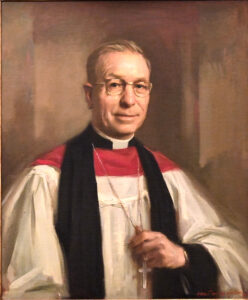 Dr. James W. Kennedy is called as the eighth rector of Ascension.
Dr. James W. Kennedy is called as the eighth rector of Ascension.
The parish purchases 14 W. 11th Street for a new parish house. While it would serve as space for curate housing and meeting facilities for the parish, the vestry would vote to sell the property in 1978...when Manhattan real estate prices were at a low point.
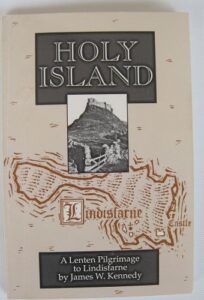 Forward Movement publishes Holy Island: A Lenten Pilgrimage to Lindisfarne, by the rector. It is chosen as the Bishop of New York's "Book for Lent." (The book is republished in 1997, two years before Dr. Kennedy's death.)
Forward Movement publishes Holy Island: A Lenten Pilgrimage to Lindisfarne, by the rector. It is chosen as the Bishop of New York's "Book for Lent." (The book is republished in 1997, two years before Dr. Kennedy's death.)
President John F. Kennedy is assassinated.
Dr. Kennedy retires from Ascension to become director and editor of Forward Movement Publications, a national publishing house of the Episcopal Church. He also went on to write several books: The Unknown Worshipper, a history of Ascension up to his retirement; Minister's Shop Talk (1965); Perspectives: Sacred and Secular (1970); and Anglican Partners (1978).
Muslim minister and human rights activist Malcolm X is shot and killed at the Audubon Ballroom, Broadway at 165th Street, in Washington Heights. (In 1997, Ascension would hold a memorial service for his widow, Betty Shabazz, following her death.)
 The Rev. John McGill Krumm, chaplain of Columbia University, becomes Ascension’s ninth rector.
The Rev. John McGill Krumm, chaplain of Columbia University, becomes Ascension’s ninth rector.
“The Open Door,” a monthly parish newsletter, debuts. In the 1970s, once the doors were closed due to vandalism, it would be renamed “Ascension News.”
A group of General Theological Seminary students protest the Vietnam War in New York City, gathering first at Ascension, then marching south to Trinity Church. Among their number is seminarian Andrew W. Foster III.
The church interior receives new paint and new lighting, along with a sound system. The La Farge mural is inspected for restoration needs, but work is deemed unnecessary.
The Rev. Dr. Martin Luther King, Jr., is assassinated in Memphis, Tennessee. Sen. Robert Kennedy is assassinated in Los Angeles. Yale University announces it will admit women.
A group of gay men (many in drag), trans women and lesbians fight back against police harassment during a raid on the Stonewall Inn (51-53 Christopher Street).
Ecumenical summer services with neighboring church First Presbyterian begin, with services in July at one church, then at the other church for August. (Beginning in 1979, for a few years the rotation among churches would also include Grace Church.)

Ascension parishioners support nine-year-old J.P. Dayarante Dissanayake of Ceylon, through the Christian Children’s Fund. The parish experiments with what will later become Rite I of the 1979 Prayer Book. Claus Hoie, an artist and vestry member living on Twelfth Street, creates a line drawing of the reredos angels, which is inscribed upon a silver tray given to the rector, John Krumm, upon his farewell, to become Bishop of Southern Ohio.
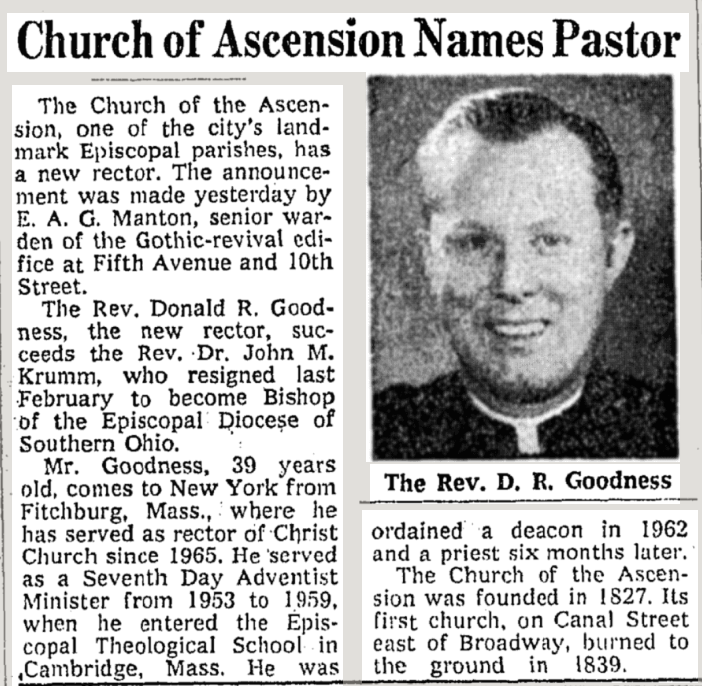
The vestry calls the Rev. Donald R. Goodness to be tenth rector of Ascension. He had originally been a Seventh Day Adventist minister and radio preacher, but had become an Episcopal priest after changing denominations. He had been discovered by vestry member Jim Manton as the rector of a church near the Manton's Massachusetts summer home.
President Nixon resigns in the wake of Watergate revelations and admissions.
Eleven deacons are ordained priest by three bishops "in good standing" at the Church of the Advocate in Philadelphia. Despite there being no canon law proscribing such ordinations, they are deemed by an emergency meeting of the House of Bishops to have been "irregular" because the newly ordained priests are women. Two years later, the General Convention makes the historic decision to authorize the ordination of women as priests and and their consecration as bishops.
The parish's worship services include its first female crucifer and ushers.
The parish begins an after-school remedial reading program in the parish hall for students of P.S. #41.
In an October 3 New York Times article describing Ascension's 150th anniversary celebrations and the contentious state of the Episcopal Church over the issue of the ordination of women and the upcoming new prayer book, one parishioner (Louis Fairchild, retired head of Fairchild Publications, the publishers of Women's Wear Daily) is quoted saying of women priests: "If it were up to my vote, I wouldn't have them. I haven't any intellectual reason not to have them. It's just prejudice." (A warden with more progressive views is also quoted.)
But unlike some other parishes at the time that are threatening to secede from the denomination over the issue, the rector makes no equivocations of Ascension's place: "If there's a city here, we'll be here," the Rev. Donald R. Goodness says. "If the church is here, it will be part of the Episcopal Church."
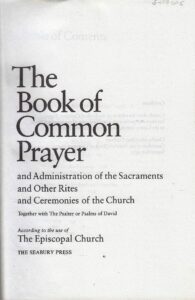 A new edition of the Book of Common Prayer is authorized by General Convention. Work begins on a new hymnal, which will be approved in 1982. Publication of these two books brings to a close a process that began in 1950.
A new edition of the Book of Common Prayer is authorized by General Convention. Work begins on a new hymnal, which will be approved in 1982. Publication of these two books brings to a close a process that began in 1950.
Having worked with most of the trial liturgies planned for the new prayer book, Ascension deploys the new book to full effect, alternating Rite I and Rite II services each week, as well as using Morning Prayer every other week for "antecommunion," the introit–to–offertory portion of the communion service. Eucharist is also celebrated every day of the week at the side altar. Ascension's progression from an evangelical, "low church" parish to a eucharistically centered, liturgical parish is complete.
The New York C.S. Lewis Society — "the oldest society for the
appreciation and discussion of C.S. Lewis in the world" — begins meeting at Ascension.
Dr. Vernon de Tar retires after more than 40 years as Ascension's organist and choirmaster. He is succeeded by one of his students, Dr. Dennis Keene, who had previously studied in Paris under Mme. Marie-Madeleine Duruflé. (Another student, Calvin Hampton, would compose the hymn tune "de Tar" in his honor; it would be published the following year in the Episcopal Church's new 1982 hymnal for hymns #456 "O Love of God, how strong and true" and #659 "O Master, let me walk with thee.")
The parish establishes a food pantry (now the major part of Ascension Outreach, Inc.'s portfolio of activities), distributing groceries to the growing number of people affected by food insecurity in New York City.
Addressing the homeless crisis, Ascension, St. Luke-in-the-Fields, and First Presbyterian join forces to coordinate, staff, and house 10-12 homeless men overnight during the winter months. For the first few years, beds for the guests and two overnight volunteers are set up in the Ascension Parish Hall, then in the St. Luke's choir room, and finally in the First Presbyterian Parlor, as the three churches rotate various volunteer duties.
The Rev. Lauren Ackland, a recent graduate of General Theological Seminary, becomes Ascension's first female curate. Much of her pastoral work in her three years at Ascension is spent dealing with the effects of the growing AIDS crisis.
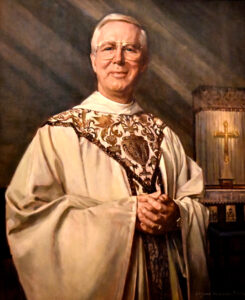 At the annual parish meeting in January, the Rev. Donald R. Goodness announces his retirement. His 25-year tenure had witnessed the transition from a "Morning Prayer parish" to daily Eucharist services, women clergy, open acceptance of the gay and lesbian community at Ascension, and the scourge of AIDS devastating the parish and neighborhood.
At the annual parish meeting in January, the Rev. Donald R. Goodness announces his retirement. His 25-year tenure had witnessed the transition from a "Morning Prayer parish" to daily Eucharist services, women clergy, open acceptance of the gay and lesbian community at Ascension, and the scourge of AIDS devastating the parish and neighborhood.
After deliberations and discussions with the diocese, the vestry asks the curate, the Rev. Jane Rockman, to serve as priest-in-charge.
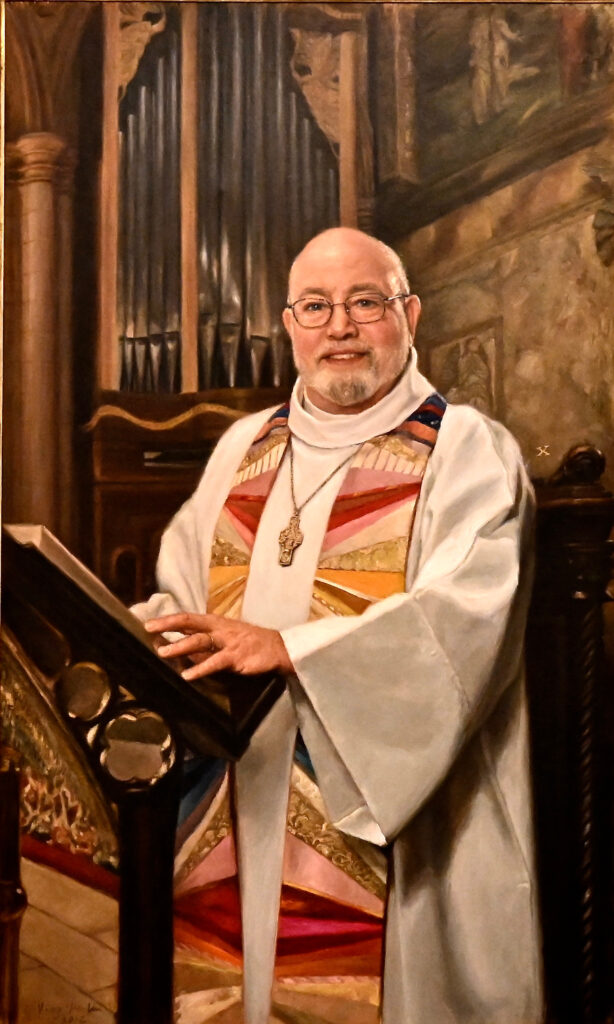 The Rev. Andrew W. Foster III, rector of St. Paul's, Nantucket, Massachusetts, accepted the vestry's call to be the eleventh rector of Ascension. Prior to his "island ministries" (Nantucket and Manhattan), Father Andrew (as he preferred to be called) had been the chaplain of Kenyon College and, earlier, the Episcopal chaplain at the University of Michigan in Ann Arbor. During his tenure at Ascension, the parish would host the "Canterbury Downtown" Episcopal ministry for students of NYU, the New School, Cooper Union, and other downtown colleges.
The Rev. Andrew W. Foster III, rector of St. Paul's, Nantucket, Massachusetts, accepted the vestry's call to be the eleventh rector of Ascension. Prior to his "island ministries" (Nantucket and Manhattan), Father Andrew (as he preferred to be called) had been the chaplain of Kenyon College and, earlier, the Episcopal chaplain at the University of Michigan in Ann Arbor. During his tenure at Ascension, the parish would host the "Canterbury Downtown" Episcopal ministry for students of NYU, the New School, Cooper Union, and other downtown colleges.Ascension begins a tradition of all-night vigil before an Altar of Repose in All Saints Chapel between the Maundy Thursday and Good Friday services.
Terrorists hijack four passenger jets, crashing two into each of the World Trade Center's twin towers, one into the Pentagon, and the fourth into a field in Pennsylvania after intervention by the passengers.

As New Yorkers, coated in ash from the buildings' collapse, trudge uptown past the church, the rector, curate and staff rush water and paper towels to use as makeshift dust masks out to the front of the church. The church doors are opened and people who are dazed, exhausted and in shock rest and take comfort in the church before heading further on their way uptown to find some way home. During the rest of the week, the parish keeps the doors open as often as possible, providing a place for the names of the lost and missing to be prayed for, and a table full of votive candles to light. The clergy listen to stories of loss, of narrow escapes, and of everyday heroics. On Friday, September 14, the parish holds a service of prayer and remembrance, joining other churches across the country.
The Presiding Bishop of the Episcopal Church, the Most Reverend Katharine Jefferts Schori, celebrates the Great Vigil of Easter at the Church of the Ascension.

The Manton Memorial Organ, a gift of the Manton Foundation in memory of Sir Edwin and Lady Florence Manton (former Ascension warden E.A.G. "Jim" Manton had been knighted by the Queen of his native England in 1996) is dedicated on May 1. It is the first French-built organ in New York City, designed by builder Pascal Quoirin.
The organ's installation followed a complete refurbishment of the interior of the church, with the walls being painted in an "ashlar effect" to match the browstone exterior, the installation of new lighting and a new sound system. During the entire period the mural and pews were covered by plywood for protection and the parish worshipped in the Parish Hall and All Saints Chapel.
Rufus Wainwright performs to a packed church — including many parishioners — for the public television program "Live from the Artists Den" at the Church of the Ascension.
Andrew Foster retires as rector. With the bishop's permission, the associate rector, the Rev. Shelley McDade, serves as interim. During her tenure, the parish will undertake a capital campaign to refurbish the rectory in preparation for a new rector.
 In 2015, the Rev. Elizabeth Maxwell accepted the vestry's call as rector of this historic church. With previous experience at St. Michael's, now in New York City on the Upper West Side (see 1823), and Holy Apostles in Chelsea, she will help Ascension discern its call to build beloved community in this time and this place.
In 2015, the Rev. Elizabeth Maxwell accepted the vestry's call as rector of this historic church. With previous experience at St. Michael's, now in New York City on the Upper West Side (see 1823), and Holy Apostles in Chelsea, she will help Ascension discern its call to build beloved community in this time and this place.


Thanks to the miracle of vaccines, in-person Eucharist services first resume for Wednesday evenings, then for 9 a.m. Sundays, and eventually, the Sunday after Labor Day, for 11 a.m. Sundays, a year and a half since they were suspended. Communicants receive only the Host and must continue to wear masks and social distance, but much relief is felt in finally praying, singing and communing in-person in this space and with these people.
All in-person services would also be suspended Christmas Eve through January 2022 due to the "Omicron variant" wave of infections and a rising death rate. Worship returns to online platforms, but thanks to vaccine booster shots, infections just as quickly decline and in-person Eucharists resume in February 2022.

